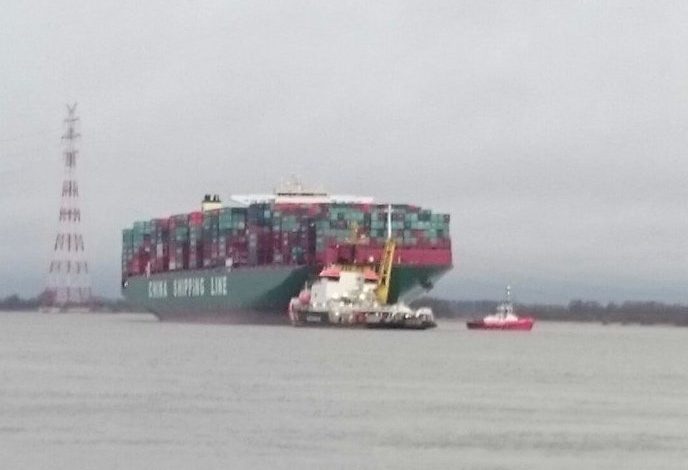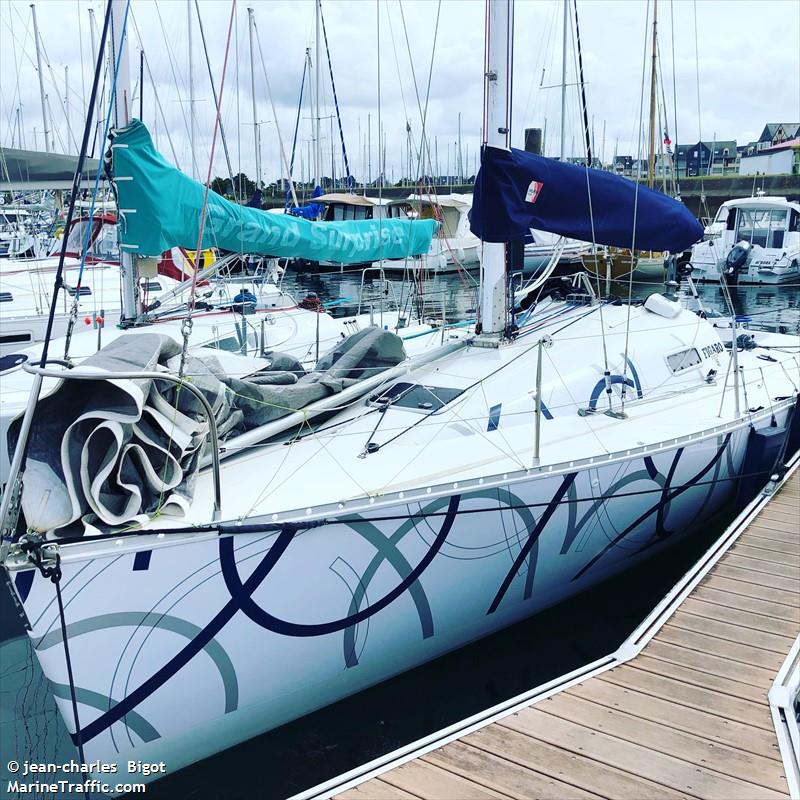CSCL Indian Ocean freed overnight, now undergoing inspection for damage

The stars were quite literally aligned in the early hours this morning for a successful refloating of the giant CSCL Indian Ocean.
The 400 m long, 19,000 teu containership is now berthed at the Port of Hamburg, a week after it had run hard aground on the river Elbe while en route to the German port from Felixstowe.
After a number of attempts to shift it, authorities waited until early Tuesday morning for a spring tide caused by the gravitational pull of the sun and the moon to finally free the green hulled leviathan, one of the largest ships afloat today.
In the days leading up to the operation, thousands of tons of bunkers and ballast water had been taken off the ship and dredgers were deployed to deepen the channel alongside the stuck ship.
Overnight, a portion of the river was closed as 12 tugs were deployed to move the CSCL Indian Ocean with the spring tide bringing an important extra 1.2 m of water depth to the river.
The ship, which is believed to have lost its steering power in the run up to the accident, is now in port and is being inspected for any damage.
Ironically, the CSCL Indian Ocean is moored in Hamburg opposite the Hyundai Drive, another giant boxship that also ran into difficulty earlier this year when it hit a bouy.

 .
.
Do you have more details on name of tugs and the total bollard pull?
FreightRun.com personnel in USA & Europe congratulate the successful refloat of a boat upon which we have some of our client’s containers – we look forward to the results of the investigation so such incidents can be prevented in the future.
As we are located in the Hamburger attraction and are dramatically dependent on the (smooth) cargo flow through the port we have read the morning news with a real relief. We hope that such an accident may not repeat in the nearest future again; there are many other obstacles to count with. But the root of this trouble seems to be obvious: the 7th generation of container carriers are quite close to all known limits of the European river estuaries and the threat of their violation is alerting. Do we really need these ships calling our ports ?
… which, again, raises the question why in the world these giant container vessels desire to travel the ‘extra mile & time’ (all costs considered as well) rather than call on Wilhelmshaven instead?
Furthermore: provided Germany’s rather excellent intermodal infrastructure (which includes Wilhelmshaven), why would anyone run the risk of potentially blocking the Elbe river and potentially become the poster child of an environmental disaster without any economical benefit? I am at a loss …
Klaus – do you fancy expanding your thoughts on the subject to make for a Contribution to this site — typically 500 words or so
Klaus, dieser Artikel ist auch von Interesse: http://www.welt.de/print/die_welt/hamburg/article152044635/Senat-kauft-Platz-fuer-Hafenschlick.html